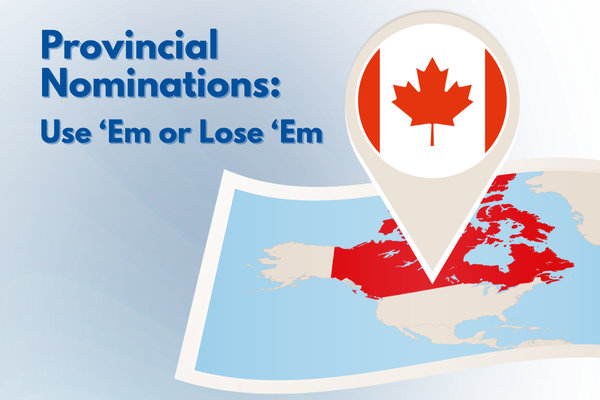Canada is known for its vibrant economy and diverse job opportunities, attracting individuals from around the world to seek employment in the country. If you're considering working in Canada, one of the essential requirements is obtaining a work permit. In this blog post, we'll guide you through the process of securing a work permit in Canada, from determining your eligibility to submitting your application.
Please note: Immigration regulations are subject to change, and we cannot guarantee that this information is up-to-date. For up-to-date information, please visit the Government of Canada's website or speak with a Regulated Canadian Immigration Consultant.
Step 1: Determine Your Eligibility
Before applying for a work permit, it's crucial to determine which category best suits your situation. Canada offers different types of work permits, including employer-specific work permits, open work permits, and international agreements. Each category has specific requirements, and understanding which one applies to you is the first step towards a successful application.
For more information about the different types of work permits, click here.
Step 2: Research Job Opportunities
Once you've identified the appropriate work permit category, start researching job opportunities in Canada. Explore job boards, industry-specific websites, and professional networks to find potential employers who might be interested in hiring international workers. Networking and connecting with people in your desired field can greatly enhance your chances of receiving a job offer.
To see job opportunities on our Job Board, click here.
Step 3: Obtain a Job Offer
To apply for an employer-specific work permit, you'll need a valid job offer from a Canadian employer. The job offer must meet certain criteria and be supported by the employer's positive Labor Market Impact Assessment (LMIA), unless an exemption applies. The LMIA ensures that hiring an international worker will not negatively impact Canadian workers' job opportunities.
Step 4: Gather Required Documents
Preparing the necessary documents is a crucial step in the work permit application process. The specific documents you need will vary depending on your situation, but generally, you will need the following:
- Valid passport
- Proof of job offer (employment contract or letter)
- Educational diplomas and transcripts
- Language proficiency test results (e.g., IELTS, CELPIP)
- Proof of financial support
- Valid travel document or visa (if applicable)
- Medical examination records (if required)
Step 5: Complete the Application
With your documents ready, you can proceed to complete the work permit application. The application can be submitted online or through a paper-based process, depending on your country of residence. Follow the instructions provided by Immigration, Refugees, and Citizenship Canada (IRCC) carefully and ensure that all information is accurate and up to date.
Step 6: Pay the Fees
Work permit applications typically require a processing fee, which must be paid to the Government of Canada when submitting your application. The fee may vary based on the type of work permit and processing times. Payment can be made online using a credit or debit card, as specified by the application instructions.
Step 7: Wait for a Decision
After submitting your application, you'll need to wait for a decision from the IRCC. The processing times can vary depending on various factors, including the volume of applications and the type of work permit. You can check the status of your application online using the application number provided.
Step 8: Arriving in Canada
If your work permit application is approved, you will receive a letter of introduction and a work permit. Make sure to review the details on your work permit, such as the start and end date and any specific conditions. Plan your travel to Canada accordingly and carry all necessary documents with you.
Ready to turn your dreams of working in Canada into a reality? At immigrate.biz, we specialize in guiding individuals through the process of obtaining a work permit and making a smooth transition to working in Canada. Our team of experts is here to support you every step of the way, from determining your eligibility to submitting your application. Don't miss out on the vibrant economy and diverse job opportunities Canada has to offer. Visit immigrate.biz today and let us help you start your journey to a successful career in Canada.

